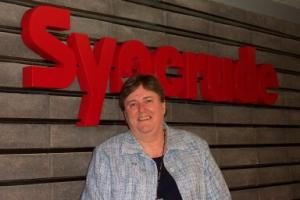Innovation Anthology #154: Assistant Professor, Biological Sciences

Back in the 1780’s, explorer Peter Pond was the first white man to see the Athabasca oil sands. Aboriginals used the sticky tar that oozed out of the ground to waterproof their canoes.
In 1929, scientist Karl Clark patented his hot water method for separating oil from the oil sands. His is the principle that underlies oil sands production in the 21st century.
But the science is far from over. Brenda Crickmore has worked as a chemist at the Syncrude Oil Sands Research Centre in Edmonton for almost three decades.
BRENDA CRICKMORE: We have issues looking at mining. So we have some of our people looking just at how do you dig, how do you mine? How do you transport? How do you cue trucks so they can be in the right place to pick the right thing up? We look at how we can maximize the recovery. We look at where the solids go, which float, which sink. And how do you store, for example the tailings that are left? How do you mitigate those storage issues? What’s the best way to recover the land? Should it go to a dry landscape, a wet landscape?
Oil sands chemistry is complex, and these are just some of the questions chemist Brenda Crickmore and her colleagues investigate everyday.
Thanks today to SYNCRUDE CANADA.
Learn more at InnovationAnthology.com
I’M CHERYL CROUCHER
Guest
Jessamyn Manson, PhD,
University of Alberta, Edmonton, Alberta, Canada,
Sponsor
Syncrude
![]()
Program Date: 2008-07-24